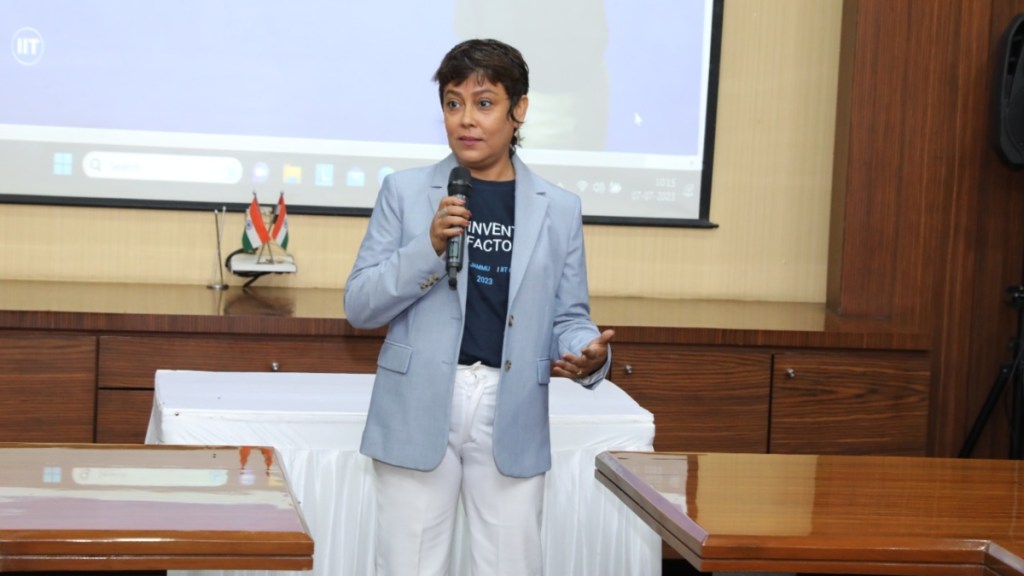Damayanti Bhattacharya, CEO of Maker Bhavan Foundation shares her views on opportunities and challenges of the education system in India with FE Education Online.
What is the best thing about today’s education system?
The education system of today is allowing students to develop completely as a learner by experiencing rather than learning by rote. In the West, college students are able to innovate because they are presented with opportunities to experiment with learning by doing and experiencing project-based learning.
This achievement is directly linked to the mass production of desktop manufacturing machines such as 3-D printers and easy access to online learning. Abroad, the faculty acts as guides and mentors by incorporating these machines into their teaching and allowing students the freedom to experiment. These modes of learning, however, remain alien to the Indian educational system.
What is the one thing you would like to change in the education system?
In redefining the educational landscape in India, my foremost focus would be on transforming STEM education. The current paradigm is predominantly theoretical, lacking the crucial element of practical exposure that is essential for holistic learning. To make STEM education relevant to social demands, I advocate for a hands-on experiential approach, through learning-by-doing (LBD) or project-based learning (PBL).
Change is easy to demand and harder to implement, particularly one that needs to be transformed from the bottom up. At Maker Bhavan Foundation, we are trying to bridge the gap. In order to encourage “learning by doing,” the Foundation has been collaborating with three IITs since 2014 to establish state-of-the-art makerspaces known as Tinkerers’ Labs (TLs).
Our vision is rooted in the belief that education should not be confined to the walls of a classroom, detached from real-world applications. Over the previous five years, hundreds of projects have been produced in the lab by more than 15,000 distinct student users who have utilized TL resources. In addition, TLs have promoted innovative thinking and rapid prototyping capabilities; from IIT Bombay alone, up to six student start-ups have come forth.
What has digital’s role in the evolution of the education system?
In the context of India, the digital revolution in education has been transformative, addressing unique challenges and opening new avenues. With the widespread adoption of digital tools, there’s been a notable shift towards inclusivity, reaching remote and underserved areas. The adaptability of digital platforms has allowed for a more personalized approach to education. Tailoring content to regional languages and diverse cultural contexts has enhanced engagement and comprehension among students. However, I believe it is important to note that digital education can be a supplement but cannot replace practical hands-on exposure, particularly when it comes to engineering and STEM.
What has been the disadvantage of digital in education?
Alongside transformative benefits, the digitalization of education in India has brought about its own share of challenges. A prominent drawback is the deepening of the digital divide. While urban areas often experience robust connectivity and access to technology, rural and
economically disadvantaged regions are a stark contrast. The lack of infrastructure and resources in these areas hampers students’ access to online learning platforms, hindering their ability to engage with educational content.
Moreover, the shift to digital learning assumes a certain level of digital literacy among both students and educators. Unfortunately, not all students are equipped with the necessary skills to navigate online platforms effectively. This discrepancy in digital proficiency can lead to a disparity in learning outcomes, potentially widening educational inequalities.
Another concern is the potential for increased screen time and the associated health implications, especially for younger students. Prolonged exposure to screens can contribute to issues such as eye strain and fatigue. Striking a balance between digital and offline learning experiences becomes crucial to address these health concerns.
What is the career advice you would like to give to students?
My advice to students is to view their education as a foundation for lifelong learning and adaptability. The seemingly unrelated subjects in your BTech curriculum, such as chemistry, hold hidden value. Technology evolves rapidly, and what’s in demand today might shift tomorrow. Take machine learning (ML) as an example; its importance wasn’t widely recognized until recently.
In your career, the landscape will change, and today’s hot skills might not be tomorrow’s. ML, for instance, involves not just statistics and coding but also profound domain expertise. To truly excel, you need both technical knowledge and an understanding of the specific field. Embrace the diverse subjects in your BTech – they lay the groundwork for becoming a sought-after expert who comprehends the full spectrum of your chosen field, ensuring enduring success in a dynamic professional landscape.
